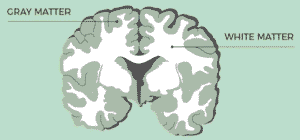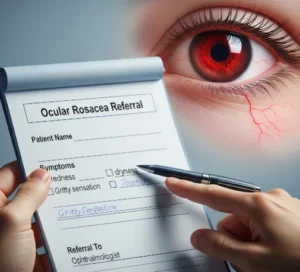Overview
Nosebleeds, medically known as epistaxis, are a common condition where blood flows from the nose due to ruptured blood vessels in the nasal lining. While usually harmless, frequent or severe nosebleeds can indicate underlying health problems.
In Korea, nosebleeds are evaluated by ENT specialists who determine the cause, assess severity, and provide appropriate medical interventions or preventive advice. Timely management is important to prevent complications such as anemia or ongoing blood loss.
Key Facts
➤ Nosebleeds can be anterior (front of the nose) or posterior (back of the nose).
➤ Most cases are mild and self-limiting, but severe bleeding may require medical attention.
➤ Common triggers include dry air, trauma, infections, and blood-thinning medications.
➤ Can affect all age groups, though children and elderly are more prone.
➤ In Korea, proper evaluation ensures identification of underlying causes and effective treatment.
What is a Nosebleed?
A nosebleed occurs when small blood vessels in the nasal mucosa rupture, causing blood to flow from the nostrils.
➔ Types of nosebleeds:
- Anterior nosebleeds – originate from the front part of the nose (most common).
- Posterior nosebleeds – originate deeper in the nasal cavity, often more severe and harder to control.
Common factors contributing to nosebleeds include:
- Trauma – nose picking, falls, or sports injuries.
- Environmental conditions – dry or cold air.
- Medical conditions – hypertension, blood disorders, or nasal tumors.
- Medications – anticoagulants or nasal sprays.
Symptoms Related to Nosebleeds
➤ Bleeding from one or both nostrils.
➤ Clotted blood in the nose or throat.
➤ Nasal congestion or discomfort before or during the bleed.
➤ Dizziness or lightheadedness in severe cases.
➤ Occasionally associated with headache or facial trauma.
➤ Recurrent nosebleeds may indicate underlying systemic conditions.
Causes / Possible Causes
Local Causes
➤ Dry air or low humidity – dries nasal membranes.
➤ Trauma or injury – accidental blows or nose picking.
➤ Infections – nasal inflammation from colds or sinusitis.
➤ Nasal structural problems – deviated septum, polyps, or tumors.
➤ Allergic rhinitis – irritation leading to fragile blood vessels.
Systemic Causes
➤ Hypertension – high blood pressure can rupture fragile vessels.
➤ Blood disorders – hemophilia, thrombocytopenia, or platelet dysfunction.
➤ Medication effects – anticoagulants, antiplatelets, or NSAIDs.
➤ Vitamin deficiencies – Vitamin C or K deficiencies affecting clotting.
Environmental & Lifestyle Factors
➤ Exposure to pollution, chemicals, or smoke.
➤ Excessive nose blowing or vigorous sneezing.
➤ Use of nasal sprays or irritants for prolonged periods.
Risk Factors
➤ Children and elderly – due to fragile nasal blood vessels.
➤ Individuals with allergies or chronic sinus problems.
➤ Hypertension or cardiovascular disease patients.
➤ Those on blood-thinning medications.
➤ Individuals living in dry or polluted environments.
Complications
Although most nosebleeds are minor, complications may include:
➤ Severe or uncontrolled bleeding, especially posterior epistaxis.
➤ Anemia from chronic or repeated nosebleeds.
➤ Airway obstruction in severe cases.
➤ Underlying disease progression if systemic causes are not addressed.
When Should I See My Doctor?
Seek medical care if:
➤ Bleeding lasts more than 20 minutes despite first-aid measures.
➤ Nosebleeds are frequent or recurrent.
➤ Heavy bleeding causes dizziness, fainting, or weakness.
➤ Associated with facial trauma or suspected fracture.
➤ You have blood disorders, hypertension, or are on anticoagulants.
➤ There is posterior nosebleed, often indicated by blood flowing down the throat.
Care and Treatment
First Aid and Home Measures
➤ Sit upright and lean slightly forward to prevent blood from entering the throat.
➤ Pinch the soft part of the nose for 10–15 minutes continuously.
➤ Apply a cold compress to the nose and cheeks to constrict blood vessels.
➤ Avoid blowing or picking the nose for several hours.
➤ Use humidifiers to prevent dry air-induced bleeding.
Medical Treatments
➤ Nasal packing – absorbent material to control bleeding.
➤ Cauterization – chemical or electrical to seal bleeding vessels.
➤ Medication adjustment – review blood-thinning drugs with a doctor.
➤ Surgery – in rare cases for recurrent posterior nosebleeds or tumors.
➤ Treatment of underlying causes, such as hypertension or blood disorders.
Preventive Measures
➤ Keep nasal passages moist with saline sprays or ointments.
➤ Avoid nose picking and excessive forceful sneezing.
➤ Manage allergies and sinus conditions.
➤ Monitor blood pressure and clotting parameters.
➤ Ensure adequate hydration and humid indoor air.
Treatment Options in Korea
Korean hospitals provide advanced care for nosebleeds, including:
Diagnostic Services
➤ Nasal endoscopy to locate bleeding sources.
➤ Blood tests to assess coagulation and platelet function.
➤ Imaging for sinus abnormalities or tumors.
➤ Evaluation of blood pressure and cardiovascular risk.
Therapies and Supportive Care
➤ Anterior or posterior nasal packing in acute cases.
➤ Cauterization of fragile vessels to prevent recurrence.
➤ Allergy management for chronic rhinitis-related bleeding.
➤ Multidisciplinary care involving ENT specialists, hematologists, and primary care doctors.
➤ Patient education on prevention, home care, and early intervention.
✅ In summary: Nosebleeds, or epistaxis, are usually benign but sometimes alarming. Causes range from dry air, trauma, and infections to systemic conditions like hypertension or clotting disorders. In Korea, comprehensive evaluation and timely intervention ensure effective control, prevention of recurrence, and overall health maintenance.













